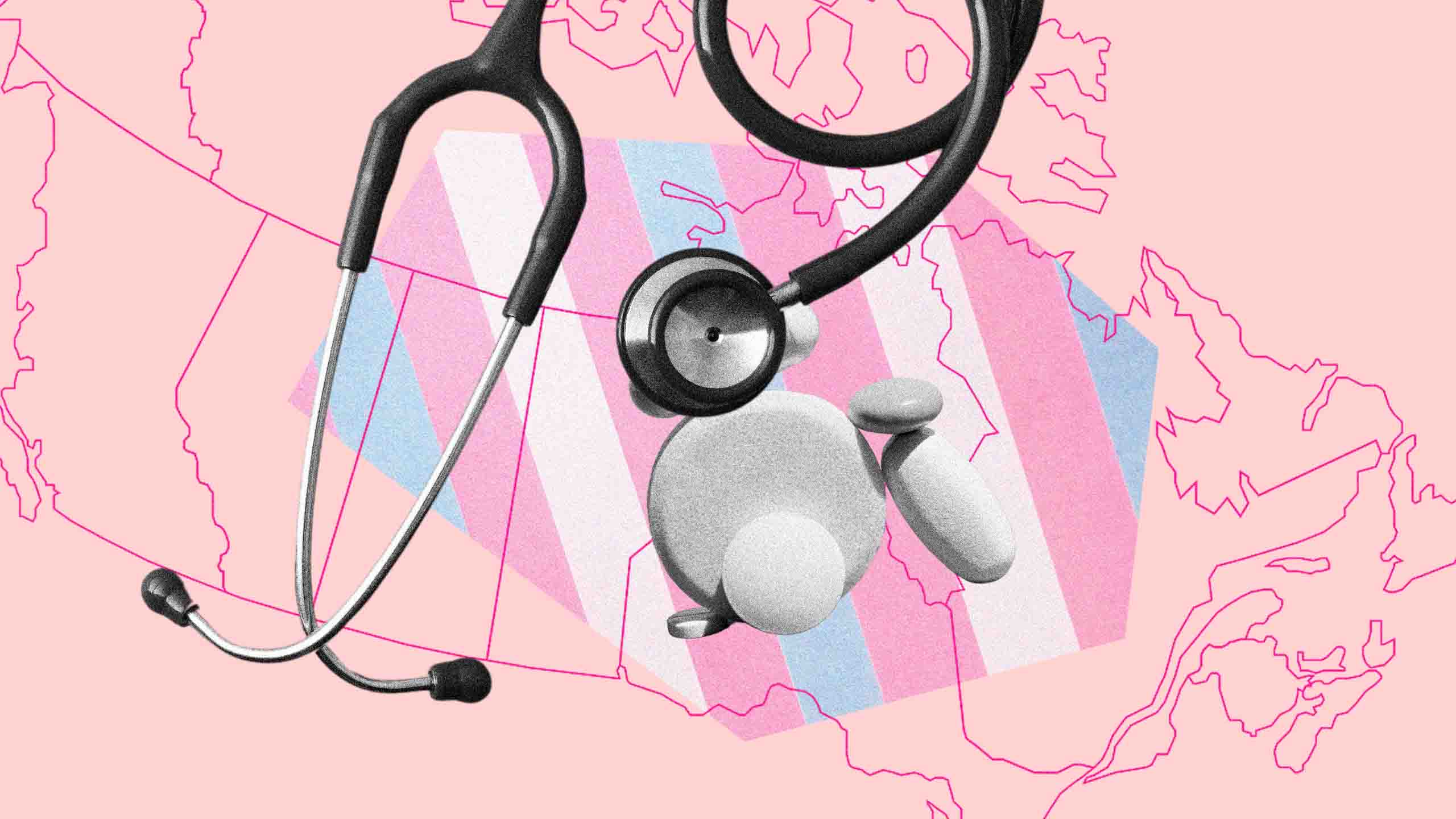Transitioning can be an act of ritual—a series of movements made to renew long-severed connections to heart, body and soul. But for many, it’s also a stressful and arduous process. Trans people survive by building each other up: we share knowledge, solidarity and tender care. It’s this collective spirit that led Jacob Barry and a small team of trans community members in Kingston, Ontario, to the creation of TransCare+, a non-profit that focuses on LGBTQ2S+ health, care and wellness in Canada.
While TransCare+ now has a nine-person staff and a full board of directors, it started off as a five-member group in early 2019. Barry, now TransCare+ executive director, and four other colleagues came together to gather knowledge around the needs of trans people across Canada. They ultimately wanted to compile an easily digestible and shareable database of information by and for trans community members. “Most of us came from academic backgrounds,” Barry says. “And honestly, we were getting tired of reading things about trans people, as trans people, [written by people] who had no sweet clue what they were talking about.”
Initially, the TransCare+ project was envisioned as a means of engaging community members in research projects, taking what information was available and translating it into documents that were more accessible for people outside of those steeped in the language of academia or healthcare institutions. With the onset of the COVID-19 pandemic and the lingering healthcare threats that accompanied it, in-person work became challenging. Rather than stop altogether, the members of TransCare+ chose to pivot into something new; moving away from research projects and shifting their focus to more community-focused initiatives like mutual aid groups (their website currently has two funds available; a community care fund to help cover basic needs, and a gender-affirming gear program to provide affirming equipment to those who apply).
As they shifted their focus, a dream project started to materialize: what if they built a website that was a central hub for all the materials they had gathered to date and make it available online? The team began to envision a virtual library of trans-care documents that anyone, anywhere, could download as needed.
Their initial website was a modest affair, a collection of PDFs that included basic trans healthcare guides for guidance on HRT, surgery information and more, made available for people to download. It was a strong start, but not the full project the group had envisioned. It took funding from a grant through Women and Gender Equality Canada (WAGE) to provide the resources needed to build the current state of the TransCare+ website, which has everything from free online courses on subjects like reproductive justice and the history of community care, to a list of books by trans writers, alongside the central feature of the website: the Care Hub where users can read through information on myriad trans-care needs. Through the Care Hub, visitors can find resources on hormone replacement therapy, surgery options and care guides and sexual and reproductive health information.
“You can find information on a trans-friendly hairdresser in Gander, Newfoundland, or on trans-friendly gay bars in Saskatchewan.”
Visitors can also access the Care Directory, a listing of services and providers searchable by city. This is not simply a database of doctors offices and surgeons’ clinics, but a catalogue of links that can help to build a life. You can find information on a trans-friendly hairdresser in Gander, Newfoundland, or on trans-friendly gay bars in Saskatchewan. There are listings for aesthetic services, tattoos, nightlife, mental health services, eating-disorder support and more, searchable by city and service.
Listings in the care directory are chosen carefully. Working from a baseline knowledge of care providers from across the country, the team set about combing through cities nationwide in an effort to find services and providers that might have fallen through the cracks or gone otherwise unnoticed.
They scoured Reddit, social media, forums and blog posts to find just where trans community members were seeking and finding care, as well as what types of services people might be missing.
Community members can also submit service providers they’ve had experience with. A link at the bottom of the care directory page allows for user-imputed listings, information that goes to the TransCare+ team, who then vet the providers to see if they’ve done any formal training through organizations like WPATH (the World Professional Association of Transgender Health providers) or have experience doing on-the-ground, community-based organizing. If the TransCare+ team feels a listing is safe to put on the website, they add it to the directory.
Barry recognizes that this isn’t an infallible system. “We do have this disclaimer on the fact that we cannot guarantee that anyone is going to be safe for everyone,” they say.
As such, there’s a reporting system that allows community members to report services or providers they have had negative or harmful experiences with. If a provider or service is found to be actively harmful, the TransCare+ team takes the listing off the website. At the same time, the team reaches out to the flagged provider and offers to send them resources and literature that can act as a starting point for learning how to be safe for trans community members.
“The bare minimum accountability piece for us is making sure that if folks are being actively harmful, that they’re not listed on our site as a resource,” Barry says.
Barry says that the directory only includes publicly listed facilities, never home addresses or staff’s identifying information. “Everything is publicly accessible information,” they say. In the case of some nurse practitioners who provide virtual care services, they’ve asked to not be listed by name and instead they’re contacted via mediators like sexual health clinics and public health centres.
Now that the resource is up and running, the TransCare+ team has begun to focus on sustaining the project long-term. “Mine and the board’s mission in the last year was to make sure that we had sustainability funding for the staff that we currently have,” Barry says. The team at TransCare+ also wants to make sure they have the resources to keep information in the database up-to-date for their users.
“My vision for this organization has always been that we change with the ebbs and flows of what the community needs versus being stagnant in our approach,” Barry says. “Because otherwise we’re just gonna end up making assumptions about what folks need.”


 Why you can trust Xtra
Why you can trust Xtra


